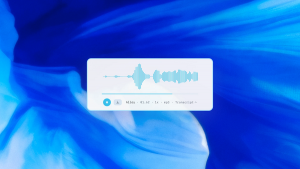Google releases first Android 15 preview with new cryptographic, chip management features
Google LLC today released the first preview version of Android 15, the next major iteration of its mobile operating system.
The preview is intended only for use by developers. Software teams can use it to familiarize themselves with Android 15 ahead of its release, as well as map out the ways their apps may have to be modified. Google will start inviting consumers to try the new operating system around April, when the new operating system version will be upgraded from preview to beta status.
Linux-powered file integrity checks
The first area Google’s engineers prioritized with Android 15 is cybersecurity. The preview release adds a set of application programming interfaces based on fs-verify, a cyberattack mitigation feature inherited from Linux. Android is built on the Linux code base and, more specifically, its kernel, the part of the operating system that contains its most essential components.
Hackers often target mobile users by attempting to corrupt a legitimate app installed on their devices with malicious code. That malicious code is frequently designed to steal data. According to Google, the new fs-verify APIs in Android 15 can help developers protect apps from such hacking attempts.
The APIs allow software teams to add a kind of seal to sensitive components of their apps. If hackers attempt to tamper with those components, the seal breaks, which makes detecting breach attempts relatively simple. Linux’s fs-verify feature implements this seal in the form of a Merkle tree, a data structure used for cryptography tasks that can hold information about the integrity of a file.
Power and thermal optimizations
Alongside the new cybersecurity features, Android 15 introduces APIs that will allow apps to make better use of a handset’s system-on-chip. The APIs are rolling out for ADPF, an operating system component that helps optimize the usability and thermal footprint of mobile games. Developers can also leverage it to enhance other types of performance-intensive apps.
Practically all the world’s Android handsets use central processing units based on Arm Holdings plc blueprints. Many of those CPUs, particularly the ones in high-end phones, implement the chip designer’s big.LITTLE processor architecture. A CPU based on the architecture includes two types of cores: high-performance cores and efficiency-optimized ones that trade off some speed for lower power usage.
Using Android 15’s new ADPF APIs, developers can indicate when certain app threads should “prefer” running in power-saving mode over maximizing performance. Google envisions the feature coming particularly handy for long-running background processes. Lowering app power usage increases mobile device’s battery life.
If an app uses too much compute capacity, it can cause a smartphone’s system-on-chip to overheat. To avoid excess heat, handsets include a mechanism that automatically throttles app performance before certain temperature thresholds are reached. The mechanism causes sudden speed drops that can negatively affect an app’s user experience.
Android 15’s ADPF implementation includes improvements that will help developers more effectively deal with the built-in performance throttling mechanism. Additionally, the release streamlines the process of adjusting a handset’s CPU and graphics processing unit frequencies to meet app requirements. Mobile processors combine a CPU with an integrated GPU and, in many cases, a number of more specialized compute modules.
New creative features
The Android 15 preview also includes a raft of other enhancements. Many of those features are geared towards creative tasks.
According to Google, one of the enhancements will allow photography apps to more granularly control a handset’s camera flash. A new partial screen sharing feature, meanwhile, allows users to record only one specific app window rather than the entire screen. While at it, Google is also making it easier for developers to integrate music composition apps with virtual synthesizers.
The search giant expects Android 15 to reach platform stability, meaning a state in which most key features are finalized, this coming June. The new operating system refresh is set to become generally available for consumers a few months later.
Image: Google
A message from John Furrier, co-founder of SiliconANGLE:
Support our mission to keep content open and free by engaging with theCUBE community. Join theCUBE’s Alumni Trust Network, where technology leaders connect, share intelligence and create opportunities.
- 15M+ viewers of theCUBE videos, powering conversations across AI, cloud, cybersecurity and more
- 11.4k+ theCUBE alumni — Connect with more than 11,400 tech and business leaders shaping the future through a unique trusted-based network.
Founded by tech visionaries John Furrier and Dave Vellante, SiliconANGLE Media has built a dynamic ecosystem of industry-leading digital media brands that reach 15+ million elite tech professionals. Our new proprietary theCUBE AI Video Cloud is breaking ground in audience interaction, leveraging theCUBEai.com neural network to help technology companies make data-driven decisions and stay at the forefront of industry conversations.











